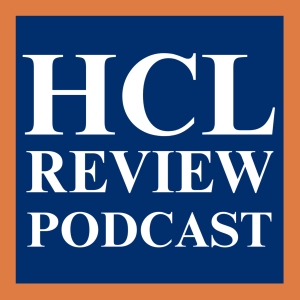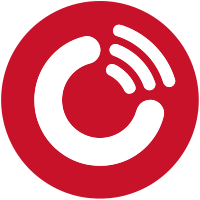Episodes

5 hours ago
5 hours ago
Abstract: This article proposes an updated model of employee engagement that takes a more nuanced view of how gender impacts commitment levels. Traditionally, engagement models have viewed employees as a homogeneous group and emphasized only organizational drivers. The concept of "worker activation" is introduced to represent the psychological resources and energy employees devote to their work. Drawing on resource drain and identity theories, it is argued that women on average face more competing demands on their time and bandwidth from disproportionate family responsibilities and pressures of masculine work norms. Case studies from various industries show how enhancing flexibility, support, and inclusive culture can help equalize activation levels and strengthen discretionary commitment for all. An equitable, identity-affirming approach to engagement is advocated for maximizing workforce potential.

2 days ago
2 days ago
Abstract: This article explores principles and strategies for constructively confronting toxic leadership in organizational settings. Toxic leaders plague every industry through detrimental behaviors such as self-absorption, volatility, aggression, and prioritizing personal interests over the organization. While removing toxic individuals seems logical, direct confrontation often backfires due to power dynamics and resistance to change. The article defines toxic leadership and its negative impacts like demotivation, turnover, dysfunction, poor climate, and harm to employee well-being. It then proposes following three principles drawn from research when constructively confronting toxicity: appealing to the toxic leader's self-interest through presenting objective data on problems, recommending specific improvement actions, and enlisting insider allies within the organization. A case study example illustrates applying these principles successfully. The article stresses the importance of managing expectations regarding lengthy change processes and incremental cultural improvements over rapid transformations or ‘silver bullet’ solutions.

3 days ago
3 days ago
Abstract: This article examines gender differences in leadership styles and abilities. The research foundation section outlines studies finding women tend to outperform men in key leadership domains like emotional intelligence, collaboration and teamwork, and communication. Meta-analyses show women scoring higher in overall emotional intelligence and its components, as well as favoring more democratic and participative leadership focused on collaboration. Research also indicates women's superior communication skills, listening ability, and ability to foster inclusion. Case studies from healthcare, technology, and non-profit industries demonstrate these gender differences in applied leadership competencies. The article argues that tapping women's strengths could maximize organizations' leadership potential and competitiveness. Strategies like assessing skills over stereotypes, sponsoring women, and ensuring inclusion are recommended.

4 days ago
4 days ago
Abstract: This article discusses the cognitive and business advantages of having diverse teams in organizations. A wealth of social science research demonstrates that cognitive diversity improves problem-solving as diverse backgrounds provide different perspectives and heuristics. Diversity also enhances decision-making through constructive debate and prevents groupthink. At the organizational level, diversity has been linked to improved financial performance, innovation, reputation, and the ability to better serve diverse markets and attract top talent. The article then provides evidence-based strategies for capitalizing on diversity, such as ensuring diversity in leadership, training on unconscious biases, establishing employee resource groups, and setting clear diversity goals. Diversity delivers tangible benefits and is necessary for businesses to adapt and thrive in today's complex environment.

5 days ago
5 days ago
Abstract: This article explores how organizations can transition to a skills-based approach through examining the research foundation and providing practical recommendations based on work with companies that have successfully made this shift. It discusses how skills-based approaches are rooted in research showing the growing importance of digital skills and need for employee reskilling. The article then recommends that organizations first change internal mindsets from focusing on roles to leveraging skills. Additional steps include developing a granular skills framework, aligning HR systems like recruiting and performance reviews to the framework, implementing upskilling programs for current employees, and instituting metrics to measure progress and identify areas for improvement. Case studies and examples from various industries are used to illustrate how a holistic transformation to skills-based thinking can unlock potential across an organization and position it for success in a constantly changing environment.

6 days ago
6 days ago
Abstract: This article explores how disruptive behaviors from a single employee can spread to negatively impact an entire work team if not properly addressed. Grounded in research on social comparison theory, conformity bias, and group dynamics, it examines the psychological processes by which poor conduct becomes normalized and erodes team culture over time. The article then presents strategies leaders can implement to prevent toxicity from spreading, such as establishing clear behavioral standards, fostering psychological safety to encourage issue reporting, conducting proactive performance management, and cultivating an inclusive and flexible work environment. With an understanding of these underlying mechanisms and researched countermeasures, managers can safeguard team functioning and productivity from being corrupted by problematic peers.

7 days ago
7 days ago
Abstract: This article explores the relationship between employee engagement and productivity, arguing that promoting engagement alone does not necessarily increase productivity. It draws a distinction between engagement, defined as enthusiasm and commitment to work, and productivity, relating to outputs and results. While engagement and productivity are often assumed to be directly correlated, research shows highly engaged employees are not always the most productive and vice versa. The article identifies autonomy and purpose as key drivers for both engagement and productivity. It then provides practical recommendations for cultivating autonomy and purpose through accountability, flexible work arrangements, strategic involvement, feedback, growth opportunities, and clearly communicating organizational purpose. Case studies and metrics for measuring success are also discussed. The article concludes that fostering meaningful work through autonomy and purpose creates a virtuous cycle boosting both engagement and productivity long-term.

Saturday Jul 19, 2025
Saturday Jul 19, 2025
Abstract: This article presents a people-centered framework for leading sustainable organizational change, arguing that while strategic plans may initiate change, successful transformation ultimately depends on addressing the human dimensions of change by drawing on literature from scholars like Kotter and Bridges discussing how change impacts individuals psychologically and the importance of guiding people through transitional phases. It outlines a five-phase model developed from their professional experience consulting with organizations undergoing change including Assess and Prepare, Align and Inform, Empower and Engage, Guide and Support, and Revise and Refine, demonstrated through case studies from a technology startup and municipal government applying this framework to drive culture change and service delivery innovation, and how key aspects that enabled sustainable results included participatory visioning, cross-functional collaboration, compassionate coaching, and iterative refinement. This people-first approach helps overcome resistance by empowering stakeholders and supporting them through psychological transitions while sustaining momentum long-term demands persistent human-centric leadership and viewing change as a continuous journey.

Friday Jul 18, 2025
Friday Jul 18, 2025
Abstract: This article explores alternative leadership models needed to guide organizations in today’s complex, dynamic environments. Outdated "command and control" styles are failing modern leaders and extensive research into cutting-edge approaches and insights from visionary practitioners are redefining 21st century leadership, arguing that traditional hierarchical, top-down leadership is ill-suited for organizations operating in complex and rapidly changing contexts where distributed workforces and rapid change are the norm, and instead truly great leaders foster self-organized, collaborative cultures that cultivate an organization's collective intelligence by sharing influence, empowering diverse stakeholders through transparency and autonomy, and focusing on continuous learning through experimentation and feedback, as well as cultivating networked connections laterally rather than rigid silos and treating people as partners unified by shared purpose to strengthen resilience and agility. Finally, the article provides recommendations for empowering cross-functional teams and distributing leadership to fully leverage an organization's talents amid uncertainty.

Thursday Jul 17, 2025
Thursday Jul 17, 2025
Abstract: This research brief explores the interplay between job satisfaction and life satisfaction for working individuals in developing economies. It analyzes relevant academic studies to understand how work-life balance mediates these relationships and how social fulfillment moderates them. Drawing on over 15 years of global consulting experience, insights from the practitioner perspective are also provided. The brief finds that achieving work-life balance through initiatives like flexible schedules and subsidized childcare is critical for well-being. It also emphasizes the importance of social support networks within and beyond the workplace. Strategic recommendations are offered for organizations seeking to foster work-life fulfillment through low-cost programs and a culture prioritizing renewal. The brief concludes that even small steps towards better balance can significantly impact productivity and retention.







